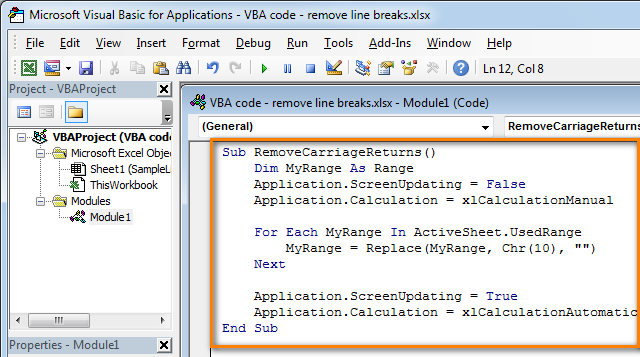Visual Basic Editor Excel For Mac 2016
Office 2016 For Developers Written by Kay Ewbank Monday, 05 October 2015 The latest version of Microsoft Office was recently released with not much to cheer about for developers. The only change is the revamping and strengthening of the Office.js APIs so they’re more consistent across the different versions for Windows, Mac and mobile devices. As anyone who’s developed for Office knows, Microsoft more or less got things right at one point when Visual Basic for Applications (VBA) gave you access to all the objects within Office, and customizing Office was easy.
Visual Basic Editor Excel For Mac 2016 Free
[Dennis] Hi, I'm Dennis Taylor and welcome to Microsoft Excel 2016 for the Mac, Automate Your Work with Macros. Like Office 2013. The applications we developed for 2013 seem to work without a hitch in 2016. Or at least sort-of-no. There appears to be a VBA panel, but VBA applications written for 2013 do not start. In Excel 2016 for Mac, you can create a macro that has a keyboard shortcut, run a macro, and delete a macro that you no longer need. When you record a macro, the macro recorder records all the steps required to complete the actions that you want your macro to perform. This is a bug in Excel. To fix this, you simply need to update Excel. Click 'Help' > 'Check for Updates', then close Excel. Next, click the 'Check for Updates' button in the Microsoft AutoUpdate window, and select for Excel to update. This is the Rough Cut version of the printed book. SAVE TIME AND SUPERCHARGE EXCEL 2016 WITH VBA AND MACROS! Use Excel 2016 VBA and Macros to automate virtually any. - Selection from Excel 2016 VBA and Macros [Book].
People who’d never developed could record their actions then edit the VBA, and the whole thing worked well. VBA is still present in Office 2016, but it’s treated rather like your embarrassing uncle who drinks too much and tells jokes in bad taste at family celebrations – it is shoved right at the back of the room in a dark corner where Microsoft hopes no-one will see it. Force quit for macbook air. Another embarrassing old relative is also still there in the form of Visual Tools for Office (VSTO), which gives you a way to create apps using.NET languages to create applications that use the features of the Office suite. VSTO has been mothballed since 2010, but still works with Office 2016. So what would Microsoft like us all to use if we need to customize Office? Office Add-ins is the main answer.
This is what used to be called Apps for Office. The Office Dev Center Getting Started document says that: “an add-in runs inside an Office application and can interact with the contents of the Office document using our rich JavaScript API. Under the hood, an add-in is simply a web app that you can host anywhere. Using a manifest.xml file, you tell us where your web app is located and how you want it to appear. We'll take care of making it show up within Office.” In practical terms this means it appears as a Task Pane panel in the Office app or document.
One improvement in this version is that the add-ins now work for some Office apps if you’re using Office on an iPad, and there’s support for Outlook 2016 for the Mac. In a Microsoft says: “we are currently working through completing support across Office 2016 for Mac, Office Mobile on Android and Windows 10.” The roadmap for completing support for Excel and Word on the Mac is Q1 2016. Other missing elements are due to be added for Office Online and Office for iOS in Q4 2015 and Q1 2016.

Visual Basic Editor Excel 2016
Android users, don’t hold your breath. What is improved in this release is that there are cross-platform Excel/Word JavaScript APIs to complement the existing, more generic Office.js library. If you’re developing for Word, you get APIs that let you work with documents, paragraphs, content controls, header/footer, search, range, sections, selection, pictures and formatting. There’s an equivalent set of Excel Office.js APIs that you can use to work with named items, worksheets, ranges, formatting, tables, and charts. It’s still a long way from what was there in Office VBA, but it’s not as limited as it was until now.